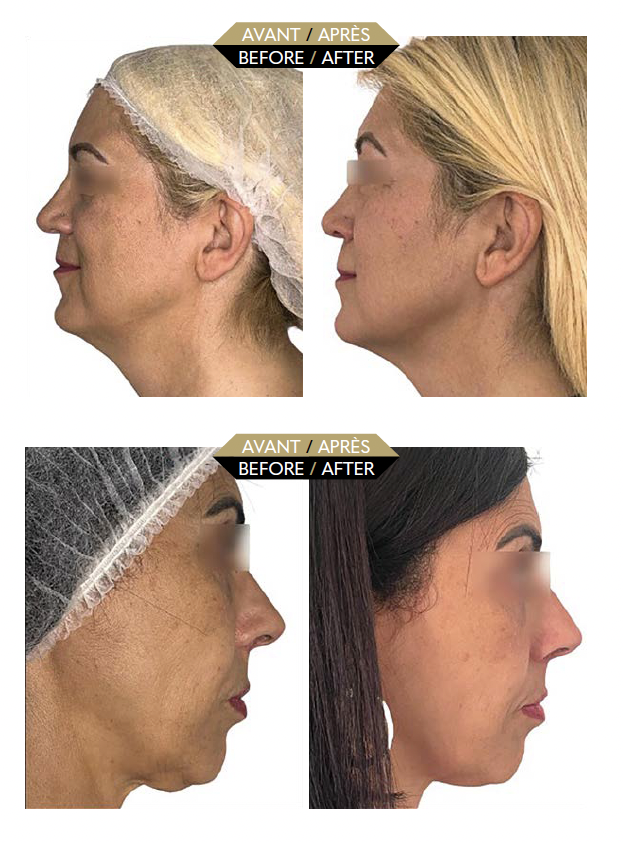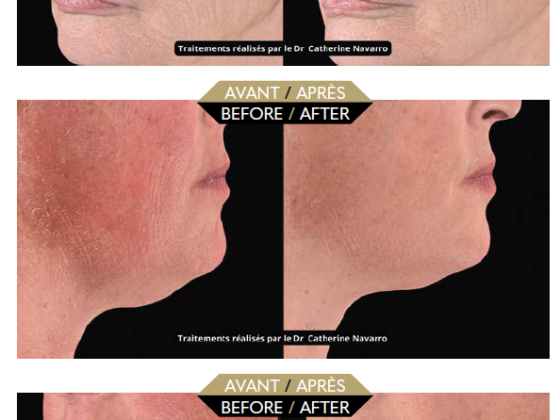Dr Farah Bedar
Radiofrequency, a WELL-KNOWN technology
 Radiofrequency is an established therapeutic tool in the field of non-invasive aesthetic medicine. This technology was approved by the Food and Drug Administration (FDA) for monopolar radiofrequency as early as 2002, thus highlighting its efficacy and safety for use. Subsequently, technological advances have led to the emergence of devices equipped with micro-needles designed to penetrate the superficial dermis, offering a notable improvement in skin texture. The field has seen significant advancements with the introduction of endodermal radiofrequency techniques, marking a considerable evolution in medical aesthetic treatments.
Radiofrequency is an established therapeutic tool in the field of non-invasive aesthetic medicine. This technology was approved by the Food and Drug Administration (FDA) for monopolar radiofrequency as early as 2002, thus highlighting its efficacy and safety for use. Subsequently, technological advances have led to the emergence of devices equipped with micro-needles designed to penetrate the superficial dermis, offering a notable improvement in skin texture. The field has seen significant advancements with the introduction of endodermal radiofrequency techniques, marking a considerable evolution in medical aesthetic treatments.
Emergence of Attiva radiofrequency and its innovative approach
Attiva is the fruit of eight years of comprehensive scientific research, culminating in approval by the Food and Drug Administration (FDA). This technology uses radiofrequency to initiate an endodermal process.
 Specific cannulas
Specific cannulas
A neurosurgical cannula, both flexible and resistant, allows for the deep delivery of energy into the dermis. This process generates an intense and localised heat emission, thanks to the non-insulated tip of the cannula which facilitates gradual thermo-stimulation. The precision of the treatment is crucial to ensure a uniform distribution of heat across the targeted area, thereby effectively activating the fibroblasts and elastin. This activation causes the existing collagen fibres to retract, followed by an increase in collagen production.
The available cannulas come in four sizes, adapted to various anatomical regions prone to skin laxity:
• 50 mm/22 Gauge for the forehead, eyelids, and upper lip.
• 100 mm/22 Gauge for the oval of the face, neck, and decolletage.
• 150 mm/20 Gauge for the arms, peri-umbilical area, and knees.
• 200 mm/16 Gauge for the thighs.
A secure treatment
The primary aim is to establish a safe protocol, characterised by a mechanism of double temperature verification throughout the procedure. This process is facilitated by the use of a cannula equipped with an internal thermal probe, designed to precisely measure the temperature within the deep layers of the epidermis. Additionally, an external thermography device allows for real-time control of the superficial skin temperature. This methodical approach ensures that the treatment is administered at an optimal temperature, thereby eliminating the risk of burns or damage to essential skin structures.
A treatment targeting elastin
The crucial aspect of this procedure lies in the activation of elastin, while preserving its structural integrity. In order to achieve this objective, it is imperative to maintain a targeted average temperature of 48 degrees Celsius.
Histologically objectified results
Within the framework of a collaboration between CRISMENC (Center for Research and Development in Aesthetic Medicine of the University of Sassari), under the direction of Professor Alessio Pirino, and the centre affiliated with the University of Verona, led by Professor Andrea Sbarbati, a rigorous evaluation of the structural and biological modifications induced in tissues following the application of the Attiva endodermal treatment was carried out on consenting subjects. For this purpose, in vivo biopsies were performed, allowing for the observation of post-Attiva histological changes. Detailed histological analyses revealed no presence of necrotic cells or development of scar fibrosis. Observations highlighted a notable improvement in the quality of the treated tissues, characterised by an increase in their firmness and a significant reduction in ptosis. More importantly, these results proved to be reproducible and persistent over several months.
Clinical outcomes and patient perceptions post treatment
Within the context of documented clinical observations shared for educational purposes, with prior consent from the patients, it was noted that an improved definition of the facial contour was not the only perceived benefit. Patients expressed satisfaction that went beyond mere skin tightening, including a significant improvement in skin quality and complexion brightness. The recovery process proved to be easy, without the need for a significant period of social isolation. Improvements are expected to continue to manifest up to six months after the treatment. To maintain the achieved results, an annual maintenance treatment is recommended.
Although it is recognised that the outcomes achieved with endodermal radiofrequency cannot match those of surgical facelifts, this technique presents itself as an effective and minimally invasive alternative for the treatment of moderate skin laxity.
 Dr Farah Bedar: Morphology and anti-aging doctor. Mesotherapy. DU in medical lasers for aesthetic purposes (Paris Descartes University) (2017). DIU in Morphological and Anti-Aging Medicine (Paris Descartes University) (2017). DIU in Mesotherapy (Pierre and Marie Curie University) (2017). DU – Injection and Filling Techniques in Plastic and Maxillofacial Surgery (Université Paris XII) (2018). DU Anti-Aging and Prevention (University of Paris XII) (2019)
Dr Farah Bedar: Morphology and anti-aging doctor. Mesotherapy. DU in medical lasers for aesthetic purposes (Paris Descartes University) (2017). DIU in Morphological and Anti-Aging Medicine (Paris Descartes University) (2017). DIU in Mesotherapy (Pierre and Marie Curie University) (2017). DU – Injection and Filling Techniques in Plastic and Maxillofacial Surgery (Université Paris XII) (2018). DU Anti-Aging and Prevention (University of Paris XII) (2019)














